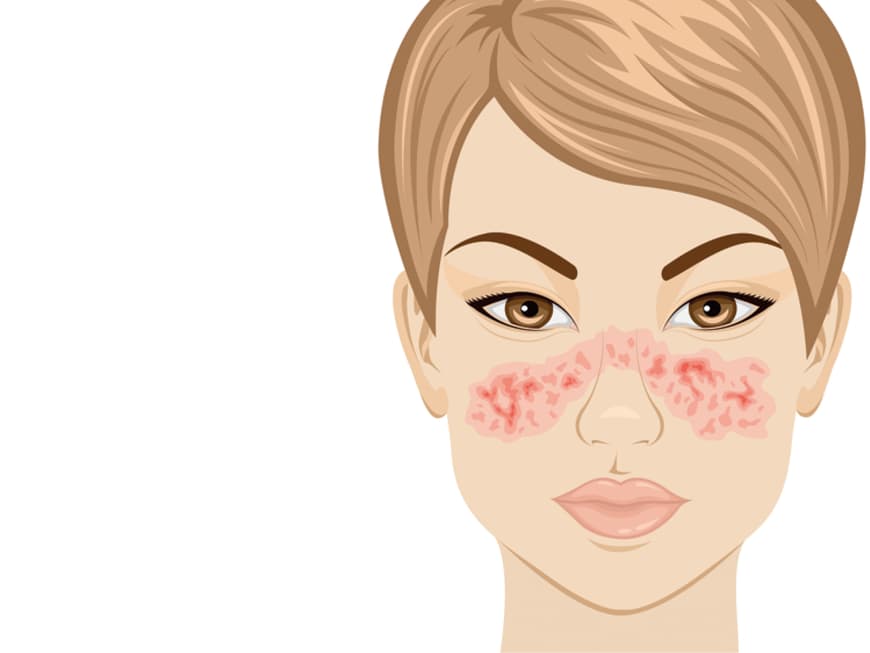
Lupus erythematosus is an inflammatory rheumatic, relapsing autoimmune disease. In this disease, immune cells attack normal cells and cause inflammation. The exact causes of this error in the immune system are still unknown. However, a connection with oestrogens is suspected, as the disease often occurs after pregnancy or while taking the pill. The inflammatory changes primarily affect the skin. However, there are also forms in which other organs are affected. Doctors distinguish between two main forms of the disease: "cutaneous lupus erythematosus", which is limited to the skin, and "systemic lupus erythematosus", which affects the whole body. Lupus almost only affects women.
Different subtypes and manifestations
The most common form of cutaneous lupus (cutaneous LE) is so-called discoid LE. It is characterized by disc-shaped, reddish-scaly changes that mainly spread to areas of the body that are exposed to the sun and often heal with scars. In five to ten percent of those affected, skin lupus can develop into systemic lupus (SLE). This can be detected by certain antibodies. Treacherous: the joints and vital organs such as the lungs, heart and kidneys can be affected. The butterfly-shaped reddening of the skin, on the other hand, heals without a trace.
What triggers lichen: UV rays and stress
The exact cause of the disease is unknown. It is suspected that certain hereditary factors are partly to blame. Lupus can also be triggered by the sun, stress and hormones. In addition, some medications temporarily trigger similar symptoms.
The kidneys are most frequently affected
Systemic lupus erythematosus is a severe form of the disease. Systemic means that the entire organ system is affected. The first signs are often fever, headaches, nausea and constant tiredness - all rather vague symptoms. Joints, muscles, tendons, organs and vessels are often affected. 77 percent of those affected suffer from damage to the kidneys. US pop singer Selena Gomez has lupus and had to undergo a kidney transplant last year because the disease had destroyed her own kidneys. Symptoms of the central nervous system also occur in around half of lupus patients.
The symptoms can be treated
Diagnosis is difficult because the symptoms can also indicate other diseases. It is also made more difficult by the fact that most of those affected suffer from a chronic, insidious form and the symptoms are only mild. Diagnosis includes skin examinations and samples, a blood test to determine antibodies, x-rays, etc. Treatment is individual. In general, however, anti-inflammatory medication (such as cortisone), antimalarials and/or immunosuppressants are prescribed. High doses of vitamin D are also said to be good. And camouflage products (high-coverage make-up) can be used to conceal the skin changes quite well. Sun protection and abstaining from nicotine are also important. The auto-immune disease cannot be cured.
Hormones as a risk factor: oestrogen-containing birth control pills
Lupus affects around 80 percent of women, especially younger women. It is assumed that female sex hormones play a role in the development of the autoimmune disease. Patients should avoid birth control pills with a high oestrogen content, especially if the disease is more severe and antibodies have been detected. They should either take progestogen-containing preparations or the mini-pill. Or even better: switch to other contraceptive methods.
You may also be interested in this:
